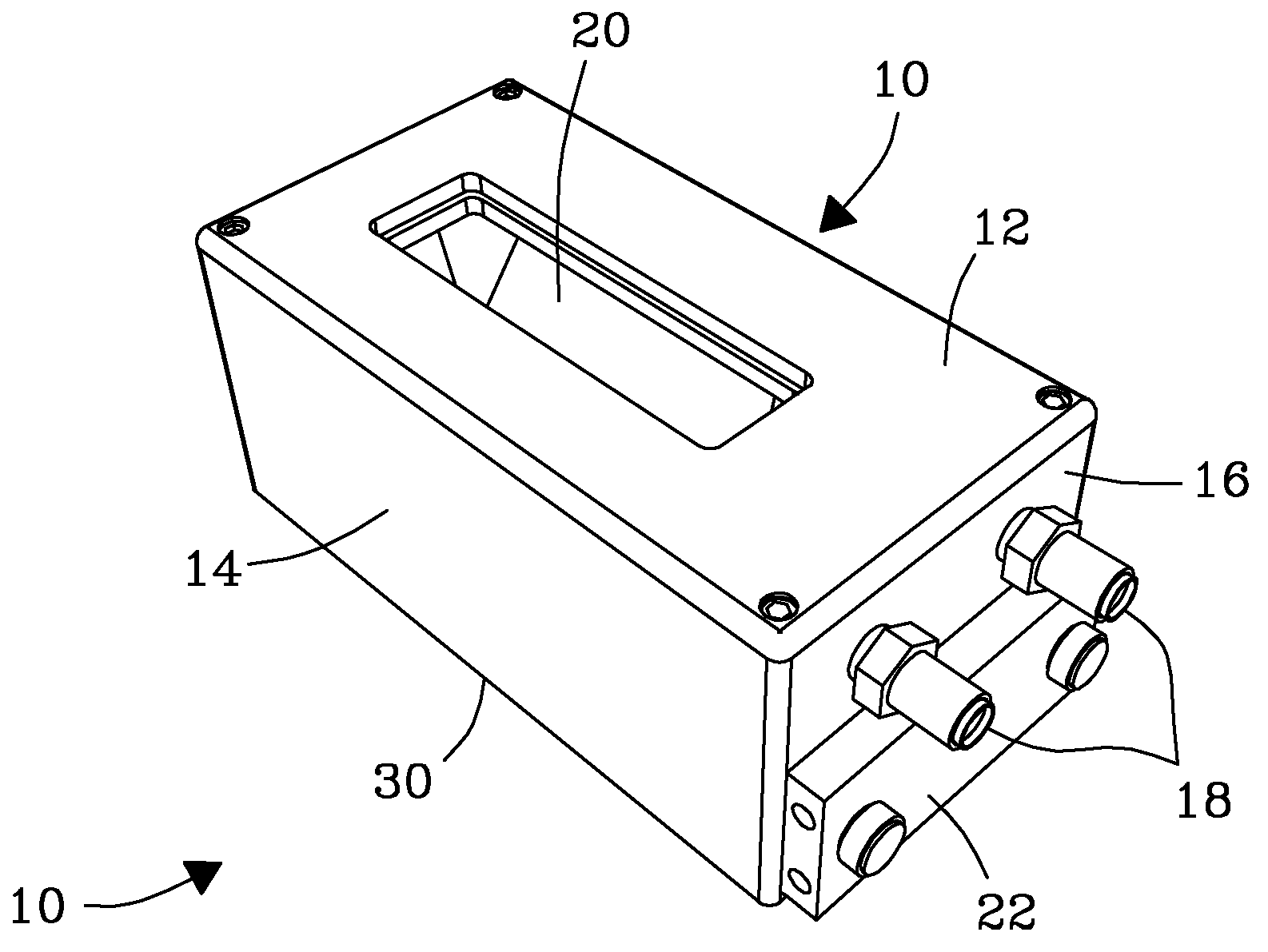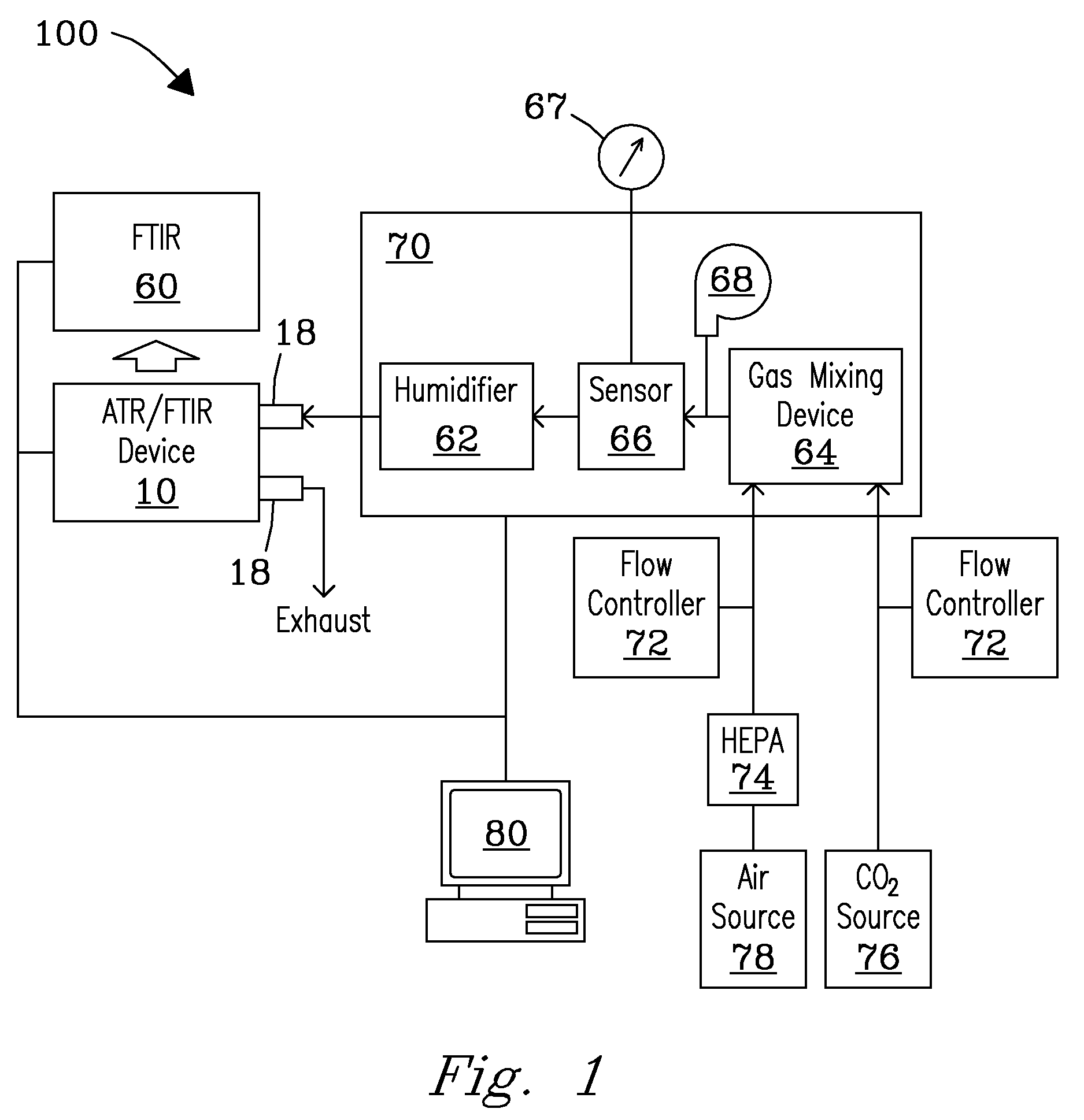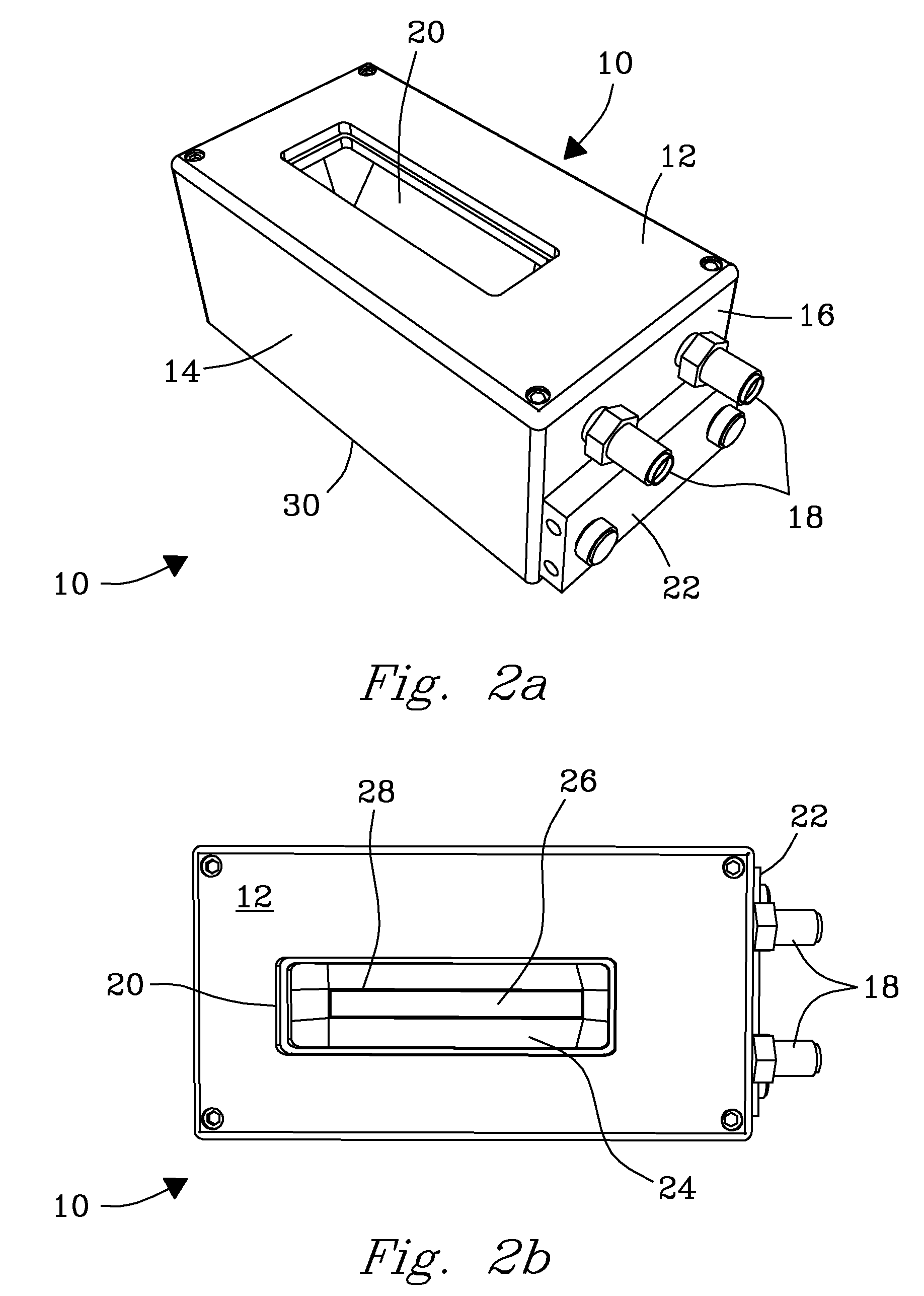System, Device, and Methods for Real-Time Screening of Live Cells, Biomarkers, and Chemical Signatures
a live cell and biomarker technology, applied in the field of attenuated total reflectance (atr) and fourier transform infrared (ftir), can solve the problems of not allowing maintenance and monitoring of live cells, and the full potential of ftir spectroscopy as a screening tool for toxicology related applications has not yet been fully realized, so as to minimize background absorption, prevent collecting background interference, and maximize the effect of atr method
- Summary
- Abstract
- Description
- Claims
- Application Information
AI Technical Summary
Benefits of technology
Problems solved by technology
Method used
Image
Examples
example 1
Real-Time Monitoring of Cells Dosed with Silica Nanoparticles
Silica Settling
[0057]Mouse epithelial cells (e.g., C-10 epithelial cells, American Type Culture Collection, Manassas, Va., USA) were grown in a normal cell growth medium (e.g., CMRL-1066 medium, invitrogen, Carlsbad, Calif., USA) supplemented with 10% fetal bovine serum (FBS), 1% GlutaMAX-I™; 1% penicillin / streptomycin, all obtained commercially (invitrogen Corp., Carlsbad, Calif. USA). Cells were maintained at 37° C. and 5% CO2 in a Water Jacketed CO2 incubator with HEPA filter (e.g., a ThermoForma Series II Water Jacketed CO2 incubator. Thermo Fisher Scientific, Inc., Waltham, Mass., USA). Cells were subcultured at 70-80% confluency from the incubator following standard protocols. Media was removed from the cells and Trypsin-EDTA (GIBCO, Grand Island, N.Y., USA) was added to detach cells from the cell culture plate. An equal volume of supplemented CMRL-1066 medium was added to the detached cells (as observed with a mic...
example 2
Real-Time Monitoring of Confluent Cells Treated with Tumor Promoter (bFGF)
[0059]Mouse cells (JB6 carcinogenesis mouse endothelial model cells) (clone 41-5a, ATCC, Manassas, Va., USA) were maintained in a minimal essential medium (MEM+GlutaMAX-I™, CISCO, Grand Island, N.Y.) supplemented with 5% fetal bovine serum (FBS) (Atlanta Biologicais, Norcross, Ga.) that further included: 1% penicillin / streptomycin (GIBCO, Grand Island, N.Y.) and an additional 1%. GlutaMAX-I™ (GIBCO, Grand Island, N.Y.). Cells were maintained at 37° C. and 5% CO2 in an incubator (e.g., a ThermoForma Series II Water Jacketed CO2 incubator. Thermo Fisher Scientific, inc., Waltham, Mass.) equipped with a HEPA filter. The JB6 cells were subcultured at 70-80% confluency following standard protocols. Media was removed from cells and Trypsin-EDTA (GIBCO, Grand island, N.Y.) was added to detach cells from the cell culture plate. An equal volume of the fluid medium that was supplemented with MEM+GlutaMAX-I™ was added to...
PUM
 Login to View More
Login to View More Abstract
Description
Claims
Application Information
 Login to View More
Login to View More - R&D
- Intellectual Property
- Life Sciences
- Materials
- Tech Scout
- Unparalleled Data Quality
- Higher Quality Content
- 60% Fewer Hallucinations
Browse by: Latest US Patents, China's latest patents, Technical Efficacy Thesaurus, Application Domain, Technology Topic, Popular Technical Reports.
© 2025 PatSnap. All rights reserved.Legal|Privacy policy|Modern Slavery Act Transparency Statement|Sitemap|About US| Contact US: help@patsnap.com



